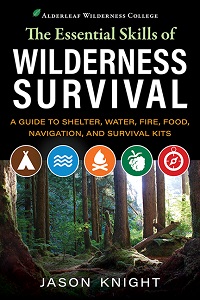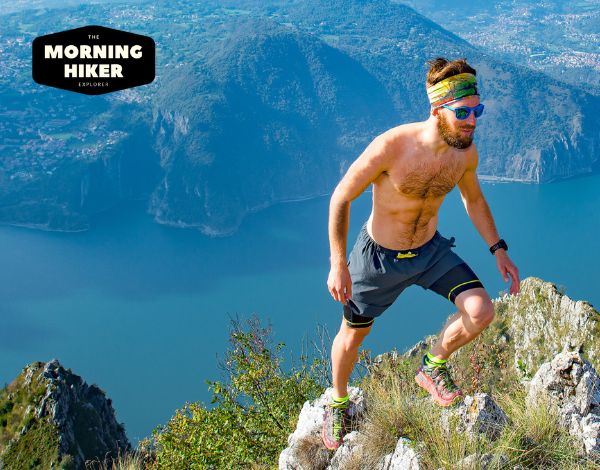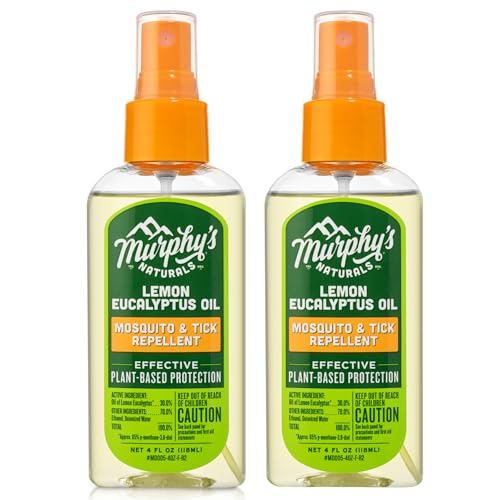Learn the dos and don’ts of a shirtless hike. Protect your skin and stay safe on the trails. Discover the benefits and tips for a safe and enjoyable adventure.
This post contains some affiliate links to products that I use and love. If you click through and make a purchase, I’ll earn a commission, at no additional cost to you. Read my full disclosure here.
As the summer heat sets in, many hikers are tempted to ditch their shirts and hit the trails with just a backpack and some sunscreen. While hiking without a shirt may seem like a refreshing option, it’s important to consider the potential risks and benefits before making the decision to go bare-chested.
However, before embracing the freedom of shirtless hiking, consider the tips and warnings provided by experienced hikers. From packing extra clothes to avoiding buggy areas, there are many ways to hike without a shirt safely and responsibly.
By balancing the benefits and risks, hikers can make an informed decision about whether to go shirtless and enjoy the summer sun or to stick with the traditional shirt-and-hat combo for maximum protection.
In This Article
Key Takeaways
- Hiking without a shirt can provide benefits such as staying cool in hot weather and getting a tan, but it also comes with risks like sunburn, skin damage, dehydration, and insect bites.
- To minimize the risks, hikers should take precautions like using sunscreen and insect repellent, wearing lightweight and breathable fabrics, bringing spare clothing, and respecting local customs and laws.
- Legal consequences may result from hiking without a shirt in some regions, so it’s important to check local laws beforehand.
- While hiking without a shirt can be a liberating experience, safety should always come first, and hikers should carefully consider the benefits and potential dangers before making a decision
My Experience With Hiking without a shirt
When we lived in Colorado, I would ocassionally hike without a shirt. Now that I live back in the Southern part of the country, I prefer to keep my shirt on.
While that may seem like an oxymoron, I have pretty good reasons.
The main reason is the humidity. In the South, it is humid, so I keep my shirt on and allow the sweat to be a coolant for me.
There is actually a science behind this. The video below explains it.
But this article is about hiking WITHOUT a shirt. In this article, I’ll explain why it might be beneficial, and some things to consider if you want to go shirtless on the trail.
Benefits of Shirtless Hiking
Going shirtless on a hike can be an exhilarating experience that allows you to connect with nature in a whole new way. Not only does it provide relief from the heat, but it also gives you more mobility and flexibility as you navigate through rugged terrain.
You’ll love the relief from the heat and chance to get a tan that comes with shirtless hiking, but don’t forget to protect yourself from the sun and bugs.
Hiking without a shirt can be liberating, allowing you to feel more in tune with nature and your surroundings. It’s important to keep in mind hiking etiquette and cultural considerations when deciding whether or not to hike shirtless.
While some may feel self-conscious about their body, others may embrace body confidence and choose to hike without a shirt. Hygiene practices should also be taken into consideration before embarking on a shirtless hike, as sweat can attract bugs and cause unpleasant odors.
Personal preferences play a big role in this decision as well – some hikers may prefer the comfort of wearing a shirt while others enjoy feeling free without one. In any case, it’s important to remember that preparation is key when hiking without a shirt.
Now let’s take a look at some tips for safely enjoying a shirtless hike!
Tips For Hiking Without A Shirt
If you’re considering hiking without a shirt, there are a few things to keep in mind to ensure a comfortable and safe experience. Make sure you take care of the essentials first.
First, insect protection is crucial in buggy areas, so make sure to wear bug repellent and consider lightweight clothing that offers additional coverage.
Sun protection is also essential, so don’t forget your sunscreen, hat, and sunglasses.
Lastly, be mindful of weather conditions before hitting the trail without a shirt – while it can provide relief from heat during a strenuous hike, it’s best to avoid high UV index or inclement weather.
Insect Protection
Bug protection is a must when hiking without a shirt, especially in areas where insects are prevalent. Natural repellents like citronella and cedar oil can help keep bugs at bay, but bug spray is also effective.
If you choose to go without a shirt, consider wearing long pants or leggings to protect your legs from insect bites.
Another option for bug protection is clothing alternatives like lightweight jackets with mesh ventilation or shirts with built-in insect repellent.
When planning your hike, research routes that are known to be less buggy and avoid hiking during peak mosquito hours (dawn and dusk).
We like ‘alll natural’ products, so here’s our short list of repellents we use.
- MADE WITH OIL OF LEMON EUCALYPTUS: This DEET-free insect repellent provides you with protection during adventures in the backyard and on the go.
- REPELS MOSQUITOES FOR UP TO 6 HOURS: This repellent keeps you and your family protected for hours, so the fun doesn’t have to end.
- Protects Against Mosquitoes for up to 6 Hours: Without any nasty chemicals like DEET, you’ll have up to 6 hours of worry-free protection on your next adventure
- Protects Against Ticks for up to 4 Hours: Our specially formulated spray provides protection against deer ticks for up to 4 hours, as well as lone star and brown dog ticks for up to 8 hours
- Made without parabens, sulfates, phthalates, synthetic fragrances or dyes
- Made with plant & essential oils of citronella, peppermint, rosemary, lemongrass and geranium
- Mosquito Repellent Spray with Active Ingredients: Containing Lemongrass Oil, Geraniol Oil, and Geranium Oil, the plant-based insect repellent spray is effective at repelling most mosquitoes, black flies, gnats,and bugs.
- Bug Repellent Spray That Adaptable to More People: Plant-based active ingredient and contains no added dyes, which means a significant decrease in your chances with mosquitoes or insects in a more gentle way.
By taking these precautions, you can enjoy a comfortable and bug-free hike.
Now that you know how to protect yourself from pesky insects on your shirtless hike, it’s important to also protect yourself from the sun’s harmful rays.
Remember to wear sunscreen, a hat, and sunglasses as we move into the next section about sun protection.
Sun Protection
To stay safe from the sun’s harmful rays, it’s important that you protect yourself with sunscreen, a hat, and sunglasses while enjoying the great outdoors.
Sunscreen application is crucial and should be done at least 15 minutes before heading out and reapplied every two hours.
When choosing a hat for sun protection, consider options with wide brims that can shade your face and neck. Sunglasses are also important to protect your eyes from UV damage.
Common areas for sunburn include the face, neck, ears, and shoulders.
- We love the reef – to help protect delicate coral reefs, Blue Lizard Sensitive sunscreen contains no oxybenzone or Octinoxate
- 100% GOOD FOR YOU & YOUR FAMILY: A fast-absorbing, ultra-sheer & lightweight sunblock for delicate skin. Water resistant and perfect for babies, kids and adults alike.
- 100% GOOD FOR YOU & YOUR FAMILY: A fast-absorbing, non-whitening & lightweight sunblock for very sensitive skin. Water resistant and perfect for babies.
- SAFE EFFECTIVE SUN PROTECTION: Help prevent sunburn and skin damage with mineral zinc oxide sunscreen with broad spectrum UVA UVB protection. Hypoallergenic & non-comedogenic. Gentle on sensitive skin
To avoid getting burned in these areas, wear clothing alternatives such as long-sleeved shirts or lightweight pants made of breathable materials like cotton or linen.
Another option is wearing UV-protective clothing designed specifically for outdoor activities.
Now that you’re protected from the sun’s harmful rays, let’s talk about weather considerations when hiking without a shirt.
Weather Considerations
Protecting yourself from the elements is crucial when spending time outdoors, and understanding weather considerations is key to a successful shirtless hike.
Hiking safety should be top of mind, especially when trekking without a shirt. Consider bringing extra layers in case of sudden temperature drops or inclement weather.
Additionally, hydration tips are essential for any outdoor adventure, but especially important when hiking without a shirt. Make sure to carry enough water and replenish your fluids regularly.
Trail etiquette is also important on any hike, whether you have a shirt on or not. Be mindful of other hikers and respect the trail rules.
Navigation skills are crucial for staying on course and avoiding getting lost in unfamiliar territory.
Lastly, wildlife awareness cannot be overlooked – keep an eye out for animals that may pose a threat and know how to react if confronted.
As you consider these hiking safety tips, it’s important to also consider the best conditions for shirtless hiking. Keep reading to discover the ideal weather conditions for stripping off your shirt while hitting the trails!
Best Conditions for Shirtless Hiking
The perfect time for a shirtless hike is on a scorching day with a low UV index, where the sun’s rays feel like hot needles piercing your skin. It’s important to manage sweat during these conditions, so make sure to bring enough water and electrolytes to stay hydrated.
It’s also crucial to be aware of cultural attitudes and trail etiquette when hiking without a shirt. While it may seem freeing and natural to some, others may find it inappropriate or offensive.
Body image can also be a factor when considering shirtless hiking. Remember that everyone has different comfort levels with their bodies, and it’s important to respect those boundaries.
As long as you’re prepared for the weather conditions and respectful of others’ perspectives, there’s no reason why you can’t enjoy the benefits of hiking without a shirt.
Now, let’s talk about backpacking considerations…
Backpacking Considerations
When backpacking, it’s not recommended to go without a shirt due to the potential for blisters and burns from rubbing straps.
The weight of your backpack can cause chafing and irritation on your skin, which can lead to painful blisters and burns. To prevent this, consider wearing a lightweight moisture-wicking shirt or investing in backpacks with padded straps.
Hydration management is also an important consideration when backpacking without a shirt. Without the protection of clothing, your skin is more susceptible to dehydration and sunburn.
Remember to bring enough water and electrolytes to stay hydrated throughout your hike.
Also consider alternatives like arm sleeves or lightweight jackets for added protection against the elements while still maintaining comfort on the trail.
And always remember trail etiquette by respecting other hikers’ preferences for clothing on the trail.
While there are benefits such as relief from heat during strenuous hikes, it’s crucial to weigh these against potential risks like sunburns, bug bites, and chafing. Always be prepared with extra layers if weather conditions change unexpectedly or if you need additional coverage during different parts of your hike.
Thoughts And Considerations
Now that you know the ins and outs of backpacking without a shirt, it’s time to consider some final thoughts and considerations before hitting the trails.
First and foremost, hydration needs should be your top priority. When hiking shirtless, your body is more exposed to the sun and heat, which can result in dehydration. Be sure to bring enough water or invest in a hydration pack to keep yourself hydrated throughout the hike.
It’s also important to remember trail etiquette when hiking without a shirt. Not everyone may feel comfortable with seeing bare skin on the trails, so be mindful of others around you and cover up if necessary.
Additionally, embracing body positivity is crucial when choosing to hike without a shirt. Don’t let societal norms dictate how you should dress while enjoying nature. However, it’s equally important to be aware of the dangers of overexposure and protect yourself from harmful UV rays by wearing sunscreen and appropriate clothing.
And lastly, don’t forget about the importance of proper footwear for any hike – shirtless or not!
Before You Go
Now that you’re equipped with knowledge about the benefits and precautions of hiking without a shirt, you can make an informed decision for your next adventure.
Remember to always prioritize sun protection and bug repellent, and consider the temperature and terrain before deciding to go shirtless.
While shirtless hiking may offer some advantages like increased ventilation and tanning opportunities, it’s important to weigh these benefits against potential risks like sunburns and bug bites. With proper preparation and caution, however, shirtless hiking can be a fun and enjoyable way to explore the great outdoors.
The Essential Skills of Wilderness Survival

The Essential Skills of Wilderness Survival will empower you to survive emergencies and grow deeper connections to nature, with expert instructor, Jason Knight of Alderleaf Wilderness College
You’ll discover skills that could save your life and the lives of those around you, so that you make it through challenges alive and safe, and can fully enjoy the freedom of exploring the backcountry, without worry.











We are participants in the Amazon Services LLC Associates Program, an affiliate advertising program designed to provide a means for sites to earn advertising fees by advertising and linking to Amazon.com